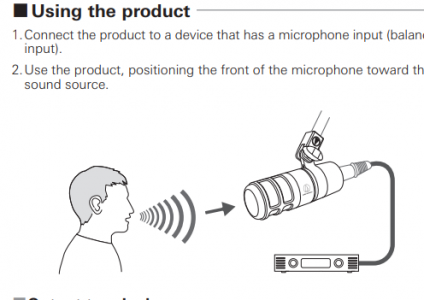Why? Does it matter?
You are using an out of date browser. It may not display this or other websites correctly.
You should upgrade or use an alternative browser.
You should upgrade or use an alternative browser.
Condenser Microphone - regular direction or upside down?
- Thread starter Yogevs
- Start date
Trash Panda
Clueless nitwit
It used to be done to avoid the heat from the tubes of old condenser microphones from running the diaphragm.
These days, the only real practical reasons are if you want to keep the microphone/stand away from the singer’s hands or if they perform better singing up into the microphone versus straight on or down into it.
These days, the only real practical reasons are if you want to keep the microphone/stand away from the singer’s hands or if they perform better singing up into the microphone versus straight on or down into it.
d.healey
Libre Wave
What does it say in the manual? This really should be your starting point.
Here is an example from the AT2040 manual, this is a mic that you probably don't want to hang upside down.

The polar pattern, capsule orientation, mesh screening, and recording subject all have a role to play in deciding the optimal orientation and position for the microphone.
Here is an example from the AT2040 manual, this is a mic that you probably don't want to hang upside down.

The polar pattern, capsule orientation, mesh screening, and recording subject all have a role to play in deciding the optimal orientation and position for the microphone.
Last edited:
Kent
sleepy member
ThisIt used to be done to avoid the heat from the tubes of old condenser microphones from running the diaphragm.
These days, the only real practical reasons are if you want to keep the microphone/stand away from the singer’s hands or if they perform better singing up into the microphone versus straight on or down into it.
Stringtree
Senior Member
Dear friend of mine was using his end-address like a side-address. It's still a microphone, just not a very good one.
rrichard63
Perpetual Novice
If you don't have a manual for it, is there a way to tell for sure whether a given microphone is end-address or side-address?Dear friend of mine was using his end-address like a side-address. It's still a microphone, just not a very good one.
d.healey
Libre Wave
If it's a recent microphone it's nearly always possible to get the manual online (assuming there is a manual).If you don't have a manual for it,
If you're miking instruments I recommend The Microphone Book by John Eargle and Mic It! by Ian Corbett
Most LDCs are side, most dynamics are end. And you can often tell from the grill. Of course that's not absolute.....If you don't have a manual for it, is there a way to tell for sure whether a given microphone is end-address or side-address?
Share:




